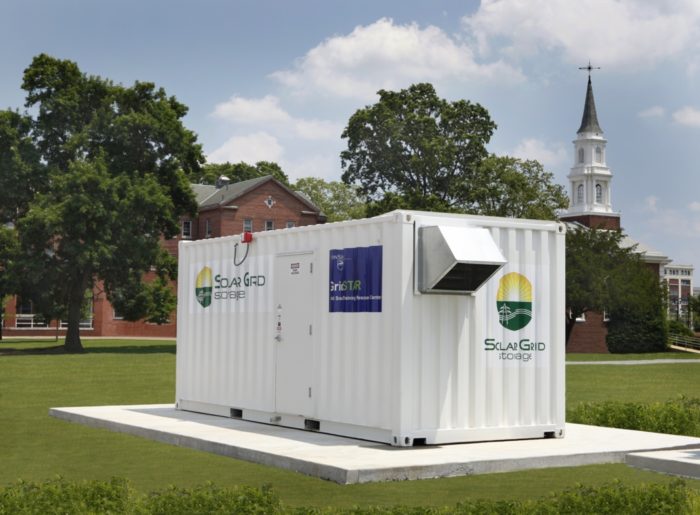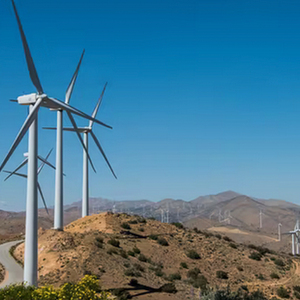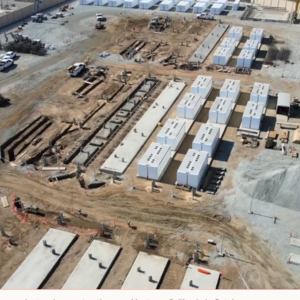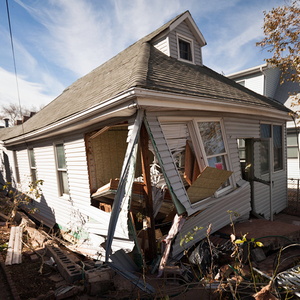Image Credit: Solar Grid Storage, LLC
Image Credit: Solar Grid Storage, LLC This schematic shows a microgrid using the Solar Grid Storage PowerFactor system.
Image Credit: Solar Grid Storage, LLC A cutaway illustration of the PowerFactor250 module.
Image Credit: Solar Grid Storage, LLC
In my blog last week, I reported on The Navy Yard in Philadelphia, a remarkable 1,200-acre business campus with 300 companies employing 10,000 people — with as many as 35,000 employees projected eventually. What had attracted me to the facility while I was in town for a conference, was an innovative demonstration that’s been launched showing how solar-electric (photovoltaic) systems with battery back-up and smart controls can help to create a more resilient power grid.
This week, I’ll dig a little more deeply into this system, which has been developed by the company Solar Grid Storage, LLC.
The emergence of microgrids
With more intense storms, wildfires, terrorist actions, and other events causing widespread power outages — and likely to cause increasingly common outages in the future, according to many experts — there is growing demand for creating islandable “microgrids.”
Microgrids are small to moderate-size power grids, often serving university or medical campuses, that have the capability to be isolated from the regional power grid in the event of a widespread outage. Such systems must have their own generation capacity along with sophisticated electricity management systems.
More than fifty military bases have created, or are in the process of creating, microgrids. Military facilities have to maintain operability, even if widespread outages occur, so they are a natural for microgrids. Some universities and hospital complexes have also created microgrids, and the State of Connecticut, heavily hit by Superstorm Sandy, Tropical Storm Irene, and a freak October snowstorm in 2011, has passed legislation to create demonstration microgrids in eight cities.
Another advantage of microgrids is that the small-scale power generation needed for such systems takes place close to where the power is being used, so if there is waste heat created in the generation process (as occurs with generators that use steam turbines or fuel cells), that heat can be captured and productively used — an approach referred to as cogeneration or combined heat and power (CHP).
How a small amount of electricity storage can boost grid resilience
Our electricity grid is a complex and hard-to-manage system. The amount of power (electricity) being generated has to be closely balanced with the amount of power being consumed (demand). Fluctuations in demand occur all the time. In the morning hours between 6 and 8 a.m., for example, a lot of people get up, turn on lights, shower, operate their coffee makers, and turn up the heat (or air conditioning); electricity demand rises significantly.
One of the big challenges in managing this fluctuating demand is that most generators can’t be turned on and off quickly. You can’t just throw a switch and expect a several-hundred-megawatt generator start cranking out electricity.
With renewable energy power-generation systems — particularly wind and solar — fluctuations in output provide another complication. When the wind stops blowing the output from a wind farm ceases, and when clouds obscure the sun the output of PV systems drops dramatically.
Battery storage in a power grid allows electricity to be stored when more is being generated than consumed, and it allows electricity to be pulled out of storage when demand exceeds supply. The same battery bank can allow a critical loads in microgrid to remain powered when the regional grid goes down. This role of batteries in managing the output from wind and solar systems is important and will grow in significance as the percentage of our electricity supplied by renewables grows.
Solar Grid Storage
Based in Philadelphia, with a few other offices spread around the Northeast, Solar Grid Storage offers a modular system for managing the output of PV arrays and storing power to better balance the output and power availability from large, grid-connected PV systems.
Advanced lithium-ion batteries are used in this system. This technology avoids the use of heavy metals like lead and cadmium that are used in other batteries. The technology also allows deep discharge without wearing out the batteries and very rapid recharging — though cost is an issue.
The business model for Solar Grid Storage is that the owner of a large PV array would own just the actual array, and Solar Grid Storage would own the inverter, battery system, and other equipment needed to manage the system. These components come packaged in a 20-foot container, which the company (confusingly) trademarked as PowerFactor (at least it’s confusing to those of us who have been trying for years to fully understand what power factor means).
The battery bank and controls allow the system to take over instantaneously in the event of a regional power outage.
One of the first four of these systems has been installed at The Navy Yard, and my colleagues and I got a chance to tour this facility. This PowerFactor250 system includes a 250-kW inverter and has 125 kWh of battery storage. Being modular, it is shipped directly to the site and can be hooked up quickly.
Another, larger PowerFactor system was installed in October, 2013 in Laurel, Maryland for the real estate developer Konterra. That PowerFactor500 system manages power from a 402-kW solar array that is integrated with parking lot canopies, and it includes 300 kWh of battery storage (though 250 kWh would be more typical with the 500 kW inverter). It includes critical loads power that can provide 50 kW of electricity for just over four hours — or more when the sun is shining and generating power.
Innovation is just beginning
The Solar Grid Storage installations are cutting-edge examples of what we can expect in the years ahead as efforts to effectively integrate renewable energy into the utility grid move forward. “Adding storage to solar projects makes them even more valuable to customers and also provides new benefits to the grid — and all ratepayers,” Solar Grid Storage CEO Tom Leyden told me. “We are proud to be part of what we believe will help usher in the grid of the future.”
I believe that such innovations will demonstrate very effective synergies between solar energy (and other renewables), the goals of resilience, and the efficient operation of the power grid. It should be fun to watch!
Alex is founder of BuildingGreen, Inc. and executive editor of Environmental Building News. In 2012 he founded the Resilient Design Institute. To keep up with Alex’s latest articles and musings, you can sign up for his Twitter feed.
Weekly Newsletter
Get building science and energy efficiency advice, plus special offers, in your inbox.
















One Comment
Grid storage is poised for explosive growth
Even without the renewables part of it the benefits of dispatchable grid storage for stabilizing the grid (both frequency and voltage) a SO huge that it's becoming a really hot item world wide. In CA where the large installed base of distributed PV has alreaday created enough regulation noise on some local grids, the state has mandated a build-out of distributed grid storage:
https://www.greentechmedia.com/articles/read/Energy-Storage-Is-Cost-Effective-But-Needs-a-Clear-Market-Signal
But the benefits go beyond that. By being able to source peak-power the net amount of power coming from low-efficiency peakers instead of combined-cycle can be minimized. There are numerous competing technologies being pressed into service, some old-school and comparatively low-tech (pumped hydro, compressed air), to any number of battery technologies, to molten-salt thermal storage, etc. The iquid metal battery technology recently funded for larger scale prototype looks particularly promising on a cost/Twh basis- dramatically cheaper than lithium ion or lead-acid on a lifecycle basis:
http://phys.org/news/2013-11-ambri-liquid-metal-battery-prototype.html
In Germany there is wide consensus on moving toward a distributed-renewables distributed-storage strategy and dispensing with the large central powerplant model of grid management altogether. The inverters and control software for doing it has already been developed, and it looks like only a matter of implementation-time for the new model before they dump the last rail car of coal and drop the control rods in the nuke for the last time:
http://www.greentechmedia.com/articles/read/germany-expands-renewables-targets-considers-virtual-baseload
There is also a lot of movement on the very-localizes small scale distributed grid storage to accompany grid-tied PV, piggybacking on (relatively expensive) electric car batter technology:
http://www.greentechmedia.com/articles/read/SolarCity-Launches-Energy-Storage-for-Businesses-Using-Tesla-Battery-Packs
Since grid storage doesn't need to be portable, the low-mass/high-density of lithium ion battery doesn't make economic sense as things scale- there are cheaper but heavier technologies out there, but the special sauce is really in the inverters and control software, which can be fairly agnostic of the battery technology type and still work.
In CA some of the investor owned utilities are pushing back hard on this very-small scale storage distribution, attempting to require that the inverters & charging are being sub-metered to prove that the rooftop PV and not off-peak power was the source charging the batteries, to be sold back to the grid at peak-retail. But since the existing grid-tied inverters are not designed for this level of sub-metering it's holding up the implementation , and screwing up the (only recently revised) net-metering standards- currently a hot topic in the grid-energy nerd circles. We'll see how that eventually works out in CA, which may set the standard for the US.
The value of distributed storage and distributed generation (renewable or otherwise) has many angles. Distributed storage & power reduce the total capacity requirements of the grid infrastructure, since the peak draws can be managed on the very-local grids. The extension to autonomous islanding capacity during storm damage to the larger grid is an already solved problem, and is a better expenditure of capital than upgrading grid support for large central generators. The grid model of 1980 is already dead or dying in most of the developed world, and the grid in 2030 will have a very different look and feel (and higher reliability) than the USA 2013 model.
The technology is already well ahead of the game, and if the new nukes currently under construction in GA ever go on line, the ratepayers might be seriously question "why?", even more so than they already are. (Georgia Power is a regulated monopoly, and if small scale distributed storage and islanding is allowed by local regulators the PV + battery genie will be out of the bottle, and will likely eventually deliver a death knell to their current business model. They were allowed by regulators to charge the ratepayers ahead of time for the build out of the nukes, which was highly controversial at the time. As the price of grid-power goes up and the cost of PV and local storage crashes, it could get ugly. The higher the grid-price, the greater the incentive for ratepayers to offset it it with local power and storage, which means they then have to raise the grid price to continue paying for the grid-power infrastructure, which makes it even MORE attractive for ratepayers to bail. This sort of death-spiral can get out of hand pretty quickly, once the projected price points of PV and grid storage hit their year 2020 numbers.
Log in or create an account to post a comment.
Sign up Log in